第77章 MONEY OR SIMPLE CIRCULATION(58)
Lord Overstone (Jones Loyd,the banker),Colonel Torrens,Norman,Clay,Arbuthnot and numerous other writers known in England as the "currency school"have not only preached this doctrine,but have made it the basis of the present English and Scottish banking legislation by means of Sir Robert Peel's Bank Acts of 1844and 1845.The analysis of the ignominious fiasco they suffered both in theory and practice,after experiments on the largest national scale,can only be made in the section dealing with the theory of credit.[23]It is obvious however that Ricardo's theory,which regards currency,the fluid form of money,in isolation,ends by attributing to increases and decreases in the amount of precious metals an absolute influence on bourgeois economy such as was never imagined even in the superstitious concepts of the Monetary System.Ricardo,who declared that paper money is the most perfect form of money,was thus to become the prophet of the bullionists.
After Hume's theory,or the abstract opposition to the Monetary System,had been developed to its extreme conclusions,Steuart's concrete interpretation of money was finally restored to its legitimate position by Thomas Tooke.Tooke derives his principles not from some theory or other but from a scrupulous analysis of the history of commodity-prices from 1793to 1856.In the first edition of his History of Prices ,which was published in 1823,Tooke is still completely engrossed in the Ricardian theory and vainly tries to reconcile the facts with this theory.His pamphlet On the Currency ,which was published after the crisis of 1825,could even be regarded as the first consistent exposition of the views which Overstone was to set forth later.But continued investigation of the history of prices compelled Tooke to recognise that the direct correlation between prices and the quantity of currency presupposed by this theory is purely imaginary,that increases or decreases in the amount of currency when the value of precious metals remains constant are always the consequence,never the cause,of price variations,that altogether the circulation of money is merely a secondary movement and that,in addition to serving as medium of circulation,money performs various other functions in the real process of production.His detailed research does not belong to the sphere of simple metallic currency and at this stage it is accordingly not yet possible to examine it or the works of Wilson and Fullarton ,who belong to the same school of thought.[24]None of these writers take a one-sided view of money but deal with its various aspects,though only from a mechanical angle without paying any attention to the organic relation of these aspects either with one another or with the system of economic categories as a whole.Hence,they fall into the error of confusing money as distinct from currency with capital or even with commodities;although on the other hand,they are occasionally constrained to assert that there is a distinction between these two categories and money.[25]When,for example,gold is sent abroad,then indeed capital is sent abroad,but this is also the case when iron,cotton,corn,in short when any commodity,is exported.Both are capital and the difference between them does not consist therefore in the fact that one is capital,but that one is money and the other commodity.The role of gold as international means of exchange is thus due not to the distinctive form it has as capital,but to the specific function it performs as money.Similarly when gold or bank-notes which take its place act as means of payment in domestic trade they are at the same time capital.But it would be impossible to use capital in the shape of commodities instead,as crises very strikingly demonstrate,for instance.It is again the difference between commodities and gold used as money and not its function as capital which turns gold into a means of payment.Even when capital is directly exported as capital,e.g.,in order to lend a definite amount on interest abroad,it depends on market conditions whether this is exported in the shape of commodities or of gold;and if it is exported as gold this is done because of the specific function which the precious metals perform as money in contradistinction to commodities.Generally speaking these writers do not first of all examine money in its abstract form in which it develops within the framework of simple commodity circulation and grows out of the relations of commodities in circulation.As a consequence they continually vacillate between the abstract forms which money assumes,as opposed to commodities,and those forms of money which conceal concrete factors,such as capital,revenue,and so forth.[26]
FOOTNOTES
[1.]Incidentally,Hume admits that the adjustment takes place gradually,although this does not accord with his principle.See David Hume,Essays and Treatises on Several Subjects,London,1777,Vol.I,p.300.
[2.]"It is evident,that the prices do not so much depend on the absolute quantity of commodities,and that of money,which are in a nation,as on that of the commodities which can or may come to market and of the money which circulates.If the coin be locked up in chests,it is the same thing with regard to prices,as if it were annihilated,if the commodities be hoarded in magazines and granaries,a like effect follows.As the money and commodities,in these cases,never meet,they cannot affect each other....The whole (of prices)at last reaches a just proportion with the new quantity of specie which is in the kingdom."David Hume,op.cit.,pp.303,307,308[3.]See Law and Franklin on the surplus value which gold and silver are said to acquire from the function they perform as money.Forbonnais too.[Note in author's copy.]
[4.]This invention can actually be found in Montesquieu's works.[Note in author's copy.]
[5.]"The additional coin will probably be locked up,or converted into plate....